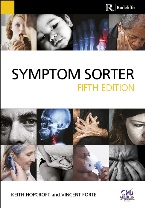The GP overview
The terminology in this area can be very confusing with words like ‘syncope’ and ‘faints’ being used imprecisely. Episodic loss of consciousness can occur in any age group, although it tends to be more common in the elderly. It is a frightening experience for the patient, and it demands thorough examination, investigation and a low threshold for referral. For the GP, the differential widens the older the patient – and cardiac causes should not be overlooked in the elderly.
Differential diagnosis
Common
· Vasovagal attacks (faints).
· Paroxysmal arrhythmia, for example Stokes–Adams attacks, sinus bradycardia, SVT.
· Epilepsy (various forms).
· Hypoglycaemia.
· Orthostatic hypotension.
Occasional
· Cardiac structural lesion, for example aortic stenosis, hypertrophic obstructive cardiomyopathy, pulmonary stenosis.
· Micturition and cough syncope.
· Sleep apnoea.
· Valsalva-induced syncope, for example weightlifting.
· Pseudoseizures.
Rare
· Narcolepsy.
· Carotid sinus syncope.
· Hyperventilation.
· Subclavian steal syndrome.
Ready reckoner
| Vasovagal attack | Arrhythmia | Epilepsy | Hypoglycaemia | Orthostatic hypotension | |
| Prodromal symptoms | Yes | No | Possible | Possible | Possible |
| Sweating | Yes | No | No | Yes | Possible |
| Trigger factors | Yes | No | Possible | Yes | Yes |
| Slow recovery | No | No | Yes | Yes | No |
| Abnormal resting ECG | No | Possible | No | No | No |
Possible investigations
Likely
- FBC.
- ECG (especially in elderly).
- If probable epilepsy, also EEG and CT scan.
Possible
- Glucometer.
- 24 hour ECG.
Small print
- Echocardiography, tilt-table testing.
- Glucometer ‘on the scene’ gives diagnosis of hypoglycaemia.
- FBC – anaemia will exacerbate any form of syncope and TIAs.
- Standard ECG may reveal signs of ischaemia and heart block. 24 hour ECG more useful for definitive diagnosis of arrhythmia.
- CT scan and EEG essential if previously undiagnosed epilepsy suspected.
- Echocardiography – if structural cardiac problem suspected.
- Tilt-table testing – for unexplained syncope to assess susceptibility to vasovagal episodes.
Top tips
- The key to diagnosis is an accurate history. This may not be available from the patient, so make a real effort to obtain an eyewitness account.
- In younger patients, the diagnosis is likely to lie between a vasovagal attack and a fit. In the middle-aged and elderly, the differential is much wider and will include, for example, arrhythmias and orthostatic hypotension.
- Episodic loss of consciousness is a symptom that merits diligent assessment. An accurate diagnosis has implications not only for the individual’s health, but also for employment and driving.
- Remember that, with a vasovagal episode, patients remaining upright (for example, sitting or in a crowd) may develop tonic-clonic movements which mimic a fit.
- Unlike in syncope or seizures, the eyes are usually closed in pseudoseizures.
Red flags
- An eyewitness account that the patient looked as though he or she had died, together with marked facial flushing on recovery, is characteristic of Stokes–Adams attacks. These can be fatal, so early diagnosis is important.
- Discovery of an aortic stenotic murmur should prompt urgent referral. Severe aortic stenosis can cause sudden cardiac death.
- Red flags suggesting a possible cardiac cause include a family history of sudden cardiac death, syncope during exercise and an abnormal ECG.
- Syncope caused by neck pressure or head movement could be carotid sinus syncope – if recurrent, this will require a pacemaker.
Dr Keith Hopcroft is a GP in Laindon, Essex.
Dr Vincent Forte is a GP in Gorleston, Norfolk.
The fifth edition of Symptom Sorter is available from Radcliffe Publishing for £34.99.


















